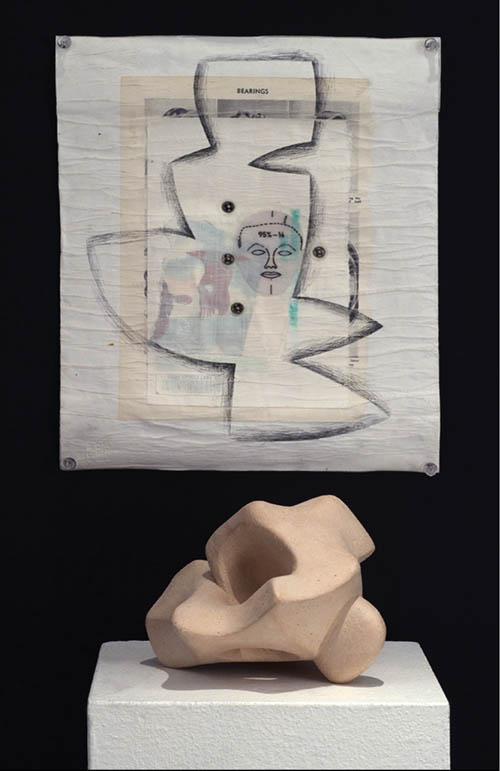Perception and Reflection
Presented by Rafael Perea de la Cabada. At Studio 3 East. Shows through August 31.
There was a time, and it lasted for centuries, when comparing painting and poetry made things clearer to everyone. For most of the Renaissance and Early Modern period, the idea that painting resembled poetry seemed to create purpose for and legitimize the visual arts. That time is long over. Given the confused and even contentious state of poetry today, an artist who identifies himself as a “visual poet,” as Rafael Perea de la Cabada does, must mean to make his calling seem more complicated to us, rather than less.

The images and sculptures now on display at Studio 3 East support this supposition. If Perea de la Cabada is a poet, he is not one in the camp of Ted Kooser, but of Jorie Graham. And indeed, his work suggests numerous notions found in contemporary academic poetry. It suggests that images can be made (even literally, as in some of his timecard series) of words. It insists that references to the body-to its curves, its limbs, and its various chambers-ought never to be left too far behind (though we should not expect to recognize that body too exactly). This art is always working with fragments, and excavated ones at that, though the work of representation may seem to make them take the shape of something whole. Most importantly, understanding this art requires a willingness to peer through layers-literally, again, in his Faces and Facets series-of material that may or may not be related by something other than our willingness to draw connections between them.
But Perea de la Cabada’s work functions on many levels, not all of them intellectual. The aesthetic is a minimalist one, made compelling by the moments of lushness that push against the asceticism, as with the boldness of line in “Malinalli,” and then overwhelm it entirely in a work like the almost entirely figurative portrait, “Tanisia.” As worthy as the images are of reflection and conversation, they also invite a purely intuitive response. This response, one that resists description, is perhaps where the comparison with poetry ought to begin, though certainly not-productive as it is-to end.



